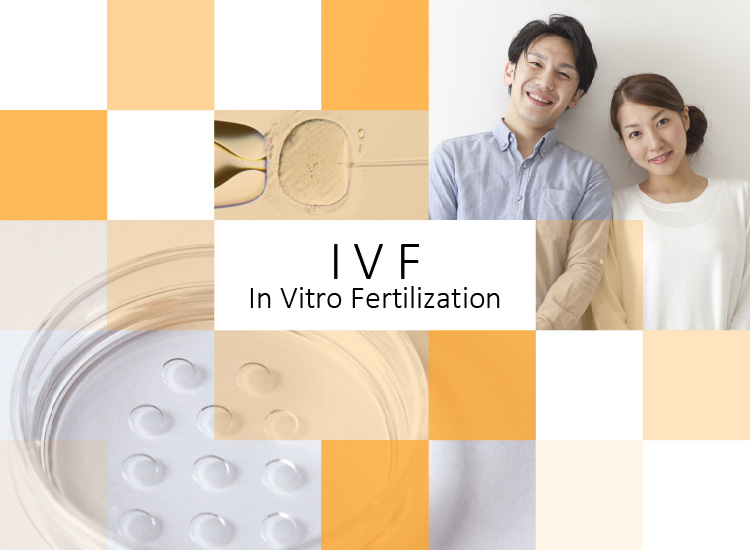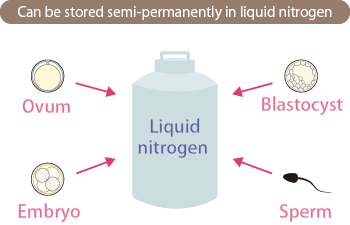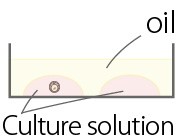|
Contents
|
After the cryoprotectant is allowed to penetrate, when it is put into the vitrification liquid, after about 1 minute the cell will dehydrated and concentrated.
In this state, since even if it is frozen it will not form crystals, it will be frozen in the liquid nitrogen in an instant.
|
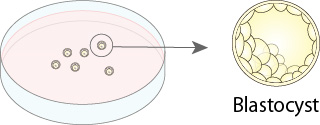
1.Equalization
Equilibrium solution (ES) -- 5min -- Cryoprotectant penetrates the embryo/blastocyst/oocyte.
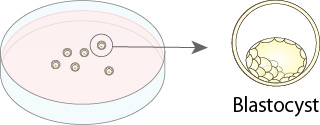
2.Concentration· Dehydration
Vitrification solution (VS) -- 1min --
Moisture is replaced by vitrification solution and cells are concentrated (so that ice crystals cannot be formed)
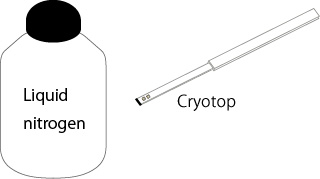
3.Cooling
The item is placed on the cryotop and frozen with liquid nitrogen.
Slow Freezing Method
|
Contents
|
The cryoprotectant is allowed to penetrate and from the allowed formation of crystals outside of the cell the dehydration and concentration is done and by use of the machine called the Program Freezer every minute it is slowly cooled down by 3℃ until it reaches -30℃.
|
As for the slow thawing method, there is no time and effort involved because that is an even operation depending on the machine, however the survival rate of the frozen embryo is not very good because we can’t do the fine tuning in relation to the state of the embryo, and the osmotic pressure at the time of cryopreservation is very high.
On the other hand, with the super fast vitrification preservation method a skillful procedure is necessary, but there will be hardly any damage to the embryo and the survival rate is close to 100%.
At our clinic, experienced embryologists will use the super fast vitrification preservation method, and will be performing the cryopreservation(freezing) of embryos, blastocysts, and oocytes(oocytes).
As for sperm, after the freezing process, it will be dispensed on to a tube, dipped into liquid nitrogen and go through cryopreservation.
|
1. Warming
|
Thawing of the frozen cells.
|
|
2. Dilution
|
Restoration of the dehydrated and concentrated cells from the cryoprotectant to their original state.
|
|
3. Recovery Culture
|
Check to see if the growth has restarted after the cell has been returned to its original state.
|
When the cell frozen in liquid nitrogen is thawed, we will use the super fast warming method because the cell will be destroyed if crystals occur if time is taken in the de-vitrification.
With this method, after dipping the frozen embryos into the thawing solution warmed to 37℃, it will then get a +4,300℃ portion of super fast warming and because the formation of crystals will be stopped, physical damage will also be avoided.
As for the cells of the embryos that are thawed by the super fast warming method, they will be in a concentrated and contracted state due to the cryoprotectant.
The cryoprotectant used in the diffusion act for the osmotic pressure difference of the solution will then be diluted and removed and then the cell will be returned to normal.
As for the cell membrane, because it will be swollen and weak due to the sudden increase in the cell’s volume, sucrose that will not transmit through the cell membrane will be used as an osmotic pressure buffer and we will dilute it step-by-step.
The osmotic pressure will let to slowly decline, and the excessive swelling of the cell along with damage of the cell membrane will be prevented, and there will be a high survival rate.
1. Warming
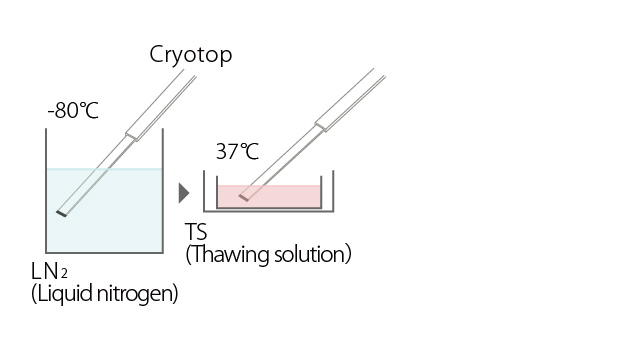

2. Dilution
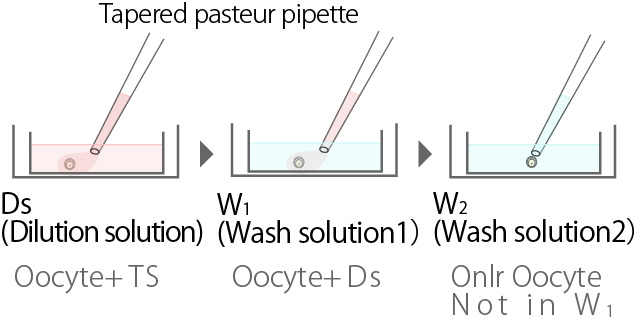

3. Recovery Culture
A few hours






